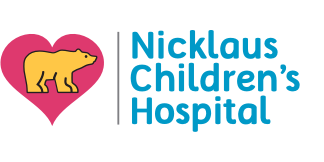- Parents Home
- Para Padres
- Allergy Center
- Asthma Center
- Cancer Center
- Diabetes Center
- Diseases & Conditions
- Doctors & Hospitals
- Emotions & Behavior
- First Aid & Safety
- Flu Center
- Food Allergy Center
- General Health
- Growth & Development
- Heart Health
- Homework Help Center
- Infections
- Newborn Center
- Nutrition & Fitness Center
- Play & Learn Center
- Pregnancy Center
- Q&A
- Recipes
- School & Family Life
- Sports Medicine Center
- Videos
- Kids Home
- Para Niños
- Asthma Center
- Cancer Center
- Diabetes Center
- Feelings
- Getting Help
- Health Problems
- Health Problems of Grown-Ups
- Heart Center
- Homework Center
- How the Body Works
- Illnesses & Injuries
- Kids' Medical Dictionary
- Movies & More
- Nutrition & Fitness Center
- Puberty & Growing Up
- Q&A
- Recipes & Cooking
- Relax & Unwind Center
- Stay Safe Center
- Staying Healthy
- Staying Safe
- Videos
- Teens Home
- Para Adolescentes
- Asthma Center
- Be Your Best Self Center
- Cancer Center
- Diabetes Center
- Diseases & Conditions
- Drugs & Alcohol
- Expert Answers (Q&A)
- Flu Center
- Homework Help Center
- Infections
- Managing Your Medical Care
- Managing Your Weight
- Nutrition & Fitness Center
- Recipes
- Safety & First Aid
- School & Work
- Sports Center
- Stress & Coping Center
- Videos
- Your Body
- Your Mind
A to Z: Costochondritis
May also be called: Chest Wall Pain; Costosternal Syndrome; Costosternal Chondrodynia
Costochondritis (kos-tuh-kon-DRY-tis) is an inflammation of the cartilage that attaches a rib to the breastbone (sternum).
More to Know
Costochondritis causes sharp, localized chest pain that can mimic the symptoms of a heart attack or other heart conditions. Costochondritis affects females more than males and is a common cause of chest pain in children, teens, and young adults.

The sternum is the hard bone you can feel in the center of the chest, running from the bottom of the throat down toward the stomach. The ribs are connected to the sternum by rubbery cartilage at points called costosternal joints. One or more of the costosternal joints can be affected by costochondritis, and it's in these joints that the pain is felt.
Keep in Mind
Costochondritis is usually benign, meaning it's harmless other than the pain it causes, and typically goes away on its own quickly, although in some cases it can last longer.
All A to Z dictionary entries are regularly reviewed by KidsHealth medical experts.

© 1995- The Nemours Foundation. KidsHealth® is a registered trademark of The Nemours Foundation. All rights reserved.
Images sourced by The Nemours Foundation and Getty Images.

